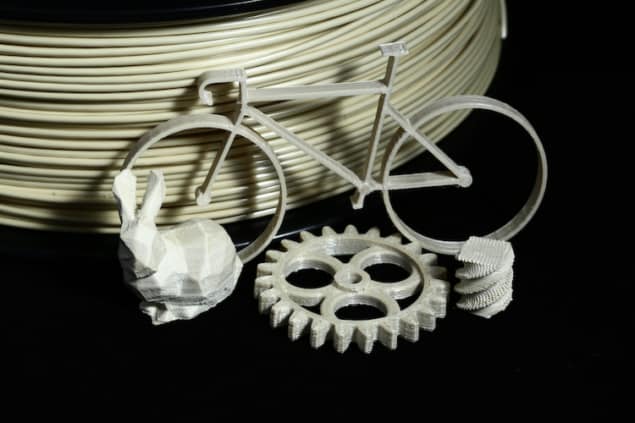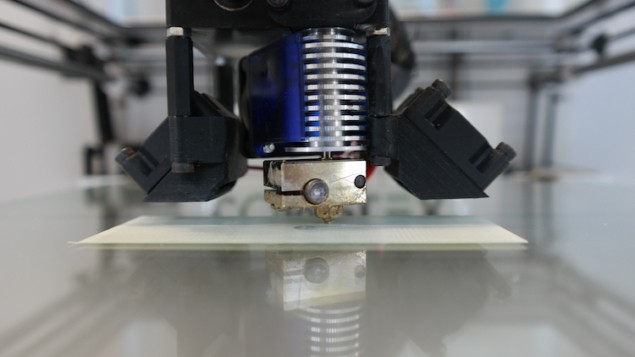Spider silk, bone and wood inspire 3D printed polymers
13 Sep 2018 Belle Dumé
 Examples of some printed parts made by FDM
Examples of some printed parts made by FDM
Although stiff, lightweight materials are needed in many applications (aircraft and biomedical implants are just two examples), they are costly and time-consuming to make. A team of researchers at ETH Zurich in Switzerland has now taken inspiration from how lightweight and tough biological materials, like spider silk, bone and wood, naturally form, to 3D print liquid-crystal-polymer structures with properties that rival the highest performance lightweight composite materials around today.
Natural materials like spider silk, bone and wood boast complex and exquisite multiscale structures that are formed through directed self-assembly, explain the Complex Materials and Soft Materials teams at ETH. Spider silk, for example, forms thanks to the alignment of silk proteins along the direction of the fibres.
Molecules self-assemble into highly oriented domains
“We reproduced this high alignment (which is normally coded within the molecular structure of building blocks secreted by tissue-forming living cells) by extruding a thermotropic liquid crystal polymer (“Vectra A950”) from a fused deposition modelling (FDM) nozzle. FDM is just another way of saying 3D printing, and it is being touted as the future of manufacturing. The structure we produced has exceptional mechanical properties in the direction that it was deposited.” These properties come from the fact that the LCP molecules self-assemble into highly oriented domains during the extrusion step. FDM extruder
FDM extruder
 FDM extruder
FDM extruder
By then orienting these molecular domains along the path that the structure was being printed, the researchers say they were able to reinforce the polymer structures in the direction that a mechanical load was applied. “Such a design principle is inspired by the ability of living tissue like bone to deposit mineral phases only along the stress lines developing throughout the structure – during bone growth, for example,” they explain. “This is also known as Wolff’s Law.”
High stiffness and strength
The (maximum reported) Young’s modulus (of 34 GPa) of the printed LCPs is much better than that of common lightweight composites such glass fibre-reinforced polymers, they add. It is also better than 3D printed continuous fibre composites.
“Indeed, the stiffness and strength (as high as 400 MPa) of our printed laminates is not far off from that of carbon-fibre reinforced polymers, with the added bonus of their being recyclable. We can produce unparalleled levels of hierarchical structural complexity and application-specific shapes thanks to the way our 3D printing works. And in contrast to conventionally FDM-printed polymer parts, we can design our anisotropic filament architectures to make them stiffer and tougher than the best polymer materials known.” In the lab
In the lab
 In the lab
In the lab
“A game-changer”
“We expect our technology to be a game-changer in several structural, biomedical and energy-harvesting applications in which lightweight materials are employed to reduce fuel consumption, provide better interfaces with biological tissues or enhance longevity and sustainability of structural components,” the researchers tell Physics World. “Because we conducted our experiments using a readily available polymer and a commercial desktop 3D printer, we have also shown that the technique might be repeated by anyone in this research field.”
The team, reporting its work in Nature 10.1038/s41586-018-0474-7, says that it is now busy developing structural components using its 3D printing technique for real-world applications.
14/9/2018 FROM PHYSICSWORLD.COM
Δεν υπάρχουν σχόλια:
Δημοσίευση σχολίου